The popular movement of embracing biophilic design elements has emphasized it time and time again; choosing the right statement plants for your office can transform your workspace's aesthetics, enhance productivity, and foster a more welcoming, comfortable, and creative environment for employees and clients alike.
However, whether you're an expert houseplant hobbyist or notoriously black-thumbed, it can be overwhelming to know where to start with selecting the perfect large indoor plants for your specific office setting! Several factors must be considered, including light conditions, area accessibility for watering, and visual impact.
If you're working with a designer like our talented ladies at Calvert's Plant Interiors, they streamline this selection process alongside you; however, it never hurts to go into a consultation knowing what style of plants you like. The list below is meant to help you find design inspiration and information on plant maintenance.

A desktop Sansevieria and a large Bird of Paradise complement this downtown office space.
Whether you have low light or lots of windows, it’s important to consider the plant’s light needs, care requirements, and visual appeal. We've been selecting and caring for plants in all kinds of indoor environments since 1976; this guide contains our findings based on our decades of experience.
1. Low-Light Office Spaces (50-100 Foot-Candles)
For office areas without nearby windows or those that rely on artificial light, low-light plants are the best choice. These plants do just fine in indirect light and are easy to maintain, making them perfect for busy workspaces; however, all of these species will thrive in medium and higher light indoor conditions as well.
As a rule of thumb, low light conditions mean that plants call for less frequent waterings, as they don't respire as much water so they stay wet for a longer time; this is especially true the larger the plant is. The large low-light plants on our maintenance accounts often only get watered about every 4-6 weeks.
Snake Plant (Sansevieria): Known for its air-purifying qualities and ease of care as the "ultimate low-light plant", the snake plant is nearly indestructible and requires very little attention. They come in several varieties, including the golden-edged Sansevieria 'Laurentii,' classic green 'Zeylanica,' and the architectural 'Cylindrica.' Larger sansevieria plants only need to be watered around every 4 weeks.
ZZ Plant (Zamioculcas zamiifolia): This popular office plant is incredibly low maintenance, tolerating low light and infrequent watering. Over time, their "branches" (which are really individual compound leaves) may begin to stretch outwards; tucking more soil around them helps keep them supported and upright. ZZ plants need water about every 3-4 weeks.
Cast Iron Plant (Aspidistra elatior): True to its name, this leafy palm relative is tough and can handle low light, infrequent waterings, and neglect with ease. Cast Iron plants only need water about every 4-6 weeks.
Dracaena 'Lisa' (Dracaena spp. Lisa): These easy-care favorites are the tallest option for low-light areas when they're in "cane" form. The "bush" form makes for a great low-light leafy plant. Dracaena 'Lisa' will need to be watered about every 3 weeks.
Dracaena 'JC Compacta' (Dracaena spp. Compacta): A popular choice for a modern and sleek interior, the Dracaena 'JC Compacta' has a compact and narrow growth habit with dwarf leaves and slow growth.
Low-light office plants (scroll) - snake plant, ZZ plant, cast iron plant, Dracaena 'Lisa', and Dracaena 'JC Compacta'
2. Medium-Light Office Spaces (100-250 Foot-Candles)
Offices with a few windows that provide indirect light are ideal for medium-light plants. These plants bring more color and vibrancy to the office while remaining relatively easy to care for.
Aglaonema: With its silvery foliage and easy maintenance, the Aglaonema is a beautiful way to brighten up your office. It thrives in medium light, and needs to be watered around every 2-3 weeks depending on the pot size.
Bromeliads (Neoregelia spp. and Guzmania spp.): These tropical plants offer bold, striking colors and unique textures without requiring the light needed for most other blooming plants, making them a standout choice for adding color to medium-light environments. They need to be watered every 2 weeks.
Dracaena Marginata (Dracaena spp.): The Dracaena marginata and its larger-leaved 'Tarzan' variant are classic office plants. They are produced in braided as well as wild and untamed branched forms, and can be small enough to fit on your desk or large enough to touch the ceiling! They like to be watered every 2-3 weeks, depending on pot size.
Dracaena Janet Craig (Dracaena deremensis spp.): These bushy plants are closely related to Dracaena 'Lisa,' but love when the conditions are a bit brighter so the colors of their variegation can shine bright. They come in several colors such as solid lime green ('Limelight'), dark green and white striped ('Warneckii'), dark green with lime green edges ('Carmen'), and more. Their watering requirements are every 2 weeks.
Bamboo Palm (Chamaedora seifrizii): This bamboo lookalike is actually in the palm family, and thrives in medium light. They can be a thirstier option, so they may need a good drink of water every 10-14 days.
Mass Cane (Dracaena massangeana): These tall, bold plants are often called 'Corn Plants' due to their large floppy green leaves. They require water around every 2-3 weeks.
Giganta (Dracaena 'Giganta'): This jumbo-sized leafy plant is a standout option for adding tropical flair to a medium-light space. They need to be watered every 2 weeks.
Lady Palm (Rhapis excelsea): These lush, full palms are multi-stalked and dark green. They should be watered every 10-14 days.
Monstera Deliciosa: With its iconic split leaves, the Monstera adds a wild natural flair with a modern, stylish twist. If left to grow to their maximum size, they will happily trail up poles or walls. Their ideal watering schedule averages every 2 weeks.
Medium-light office plants (scroll) - aglaonema, bromeliad, Dracaena marginata, Dracaena 'Tarzan', Dracaena Janet Craig 'Lemon Lime Warneckii', Dracaena Janet Craig 'Limelight', bamboo palm, mass cane, giganta, and rhapis palm
3. High-Light Office Spaces (250+ Foot-Candles)
If your office enjoys ample natural light, especially from south-facing windows, high-light plants are an excellent way to make a statement.
Fiddle Leaf Fig (Ficus lyrata): A trendy favorite, the fiddle leaf fig boasts large, dramatic leaves that add a bold design element to any well-lit office. They like to be watered every 1-2 weeks, depending on their pot diameter and how bright the area is.
Rubber Tree (Ficus elastica): Closely related to its fiddle-leaved cousin, rubber trees are bold statement plants and come in several leaf colors and shapes. They like to be watered every 1-2 weeks, as well.
Bird of Paradise (Strelitzia nicolai): For a tropical yet architectural look, a large Bird of Paradise can easily fill a space with its sizable paddle-shaped leaves. Their watering schedule is typically every 2 weeks, though it may be more frequent if the space is very bright.
Kentia Palm (Howea forsteriana.): For those wanting an upscale tropical look for their bright space, the Kentia palm is the way to go. These palms need water about every 2 weeks.
Giant Euphorbia (Euphorbia ingens, ammak): These massive cacti-esque euphorbia make a bold statement, but only thrive in the brightest of areas! They are very water-efficient and only need a drink about every 6-8 weeks.
Sticks on Fire (Euphorbia tirucalli): When exposed to cooler nighttime temps, these euphorbia turn a fiery red; indoors, they often stay yellow-green and have a funky modern look. They only need to be watered every 4-6 weeks.
Jade (Crassula ovata): These bushy branched succulents love bright light and only need water every 4-6 weeks.
High-light office plants (scroll) - fiddle leaf fig, rubber tree, bird of paradise, kentia palm, giant euphorbia (ammak, variegated), sticks on fire, and jade
Benefits of Adding Plants to Your Office
Plants do more than just beautify your office—they offer real benefits for your team and environment:
Boost Productivity: Studies show that having plants in the office can increase employee productivity by up to 15%.
Reduce Stress: Indoor plants help lower stress levels, creating a calmer, more pleasant workspace.
Improve Air Quality: Plants not only increase ambient oxygen levels in a room, they contribute to better air quality in several ways; they slightly increase humidity, sequester mold spores, and can even regulate temperature of a space in larger groupings like planted atriums.

An in-ground bed planted with Dracaena 'Lemon Lime Warneckii' and sansevieria.

If a built-in atrium is not an option, jumbo potted plants create a similar effect.
Selecting the right plants for your office primarily depends on the light availability and the type of atmosphere you want to create, but with the wide range of plant varieties to choose from, it is very customizable and can be created with your vision in mind.
If you're in the OKC Metro area and not sure where to start, our design team at Calvert's Plant Interiors will work with you to choose the best plants for your office’s unique needs through a free consultation. We also offer plant maintenance services through our highly knowledgeable tech department, so you can leave the watering and care to us!
Ready to get the ball rolling on some interior plants for your space? Click the button below to visit our website, or drop us a line at create@calverts.com.





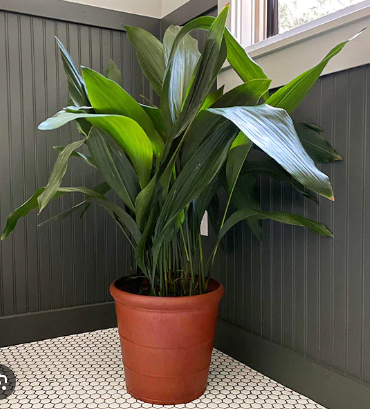



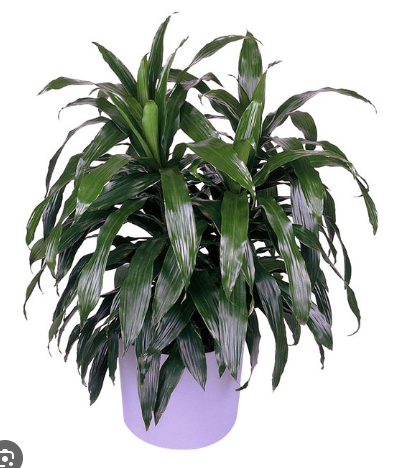



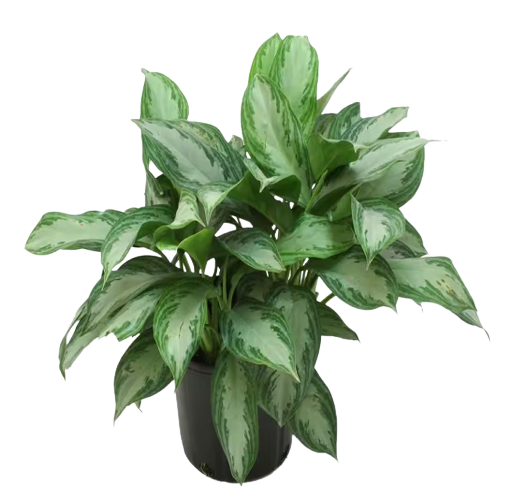



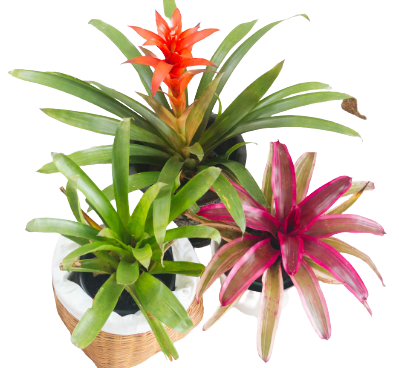













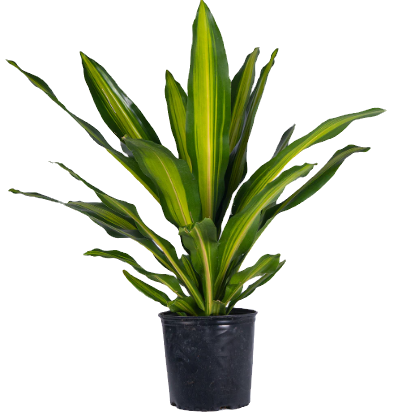
















Comments